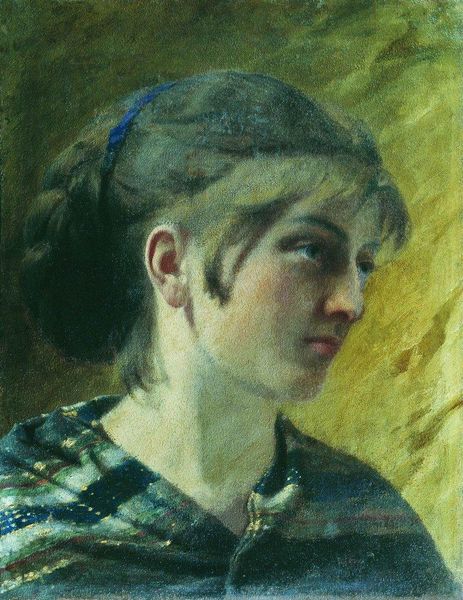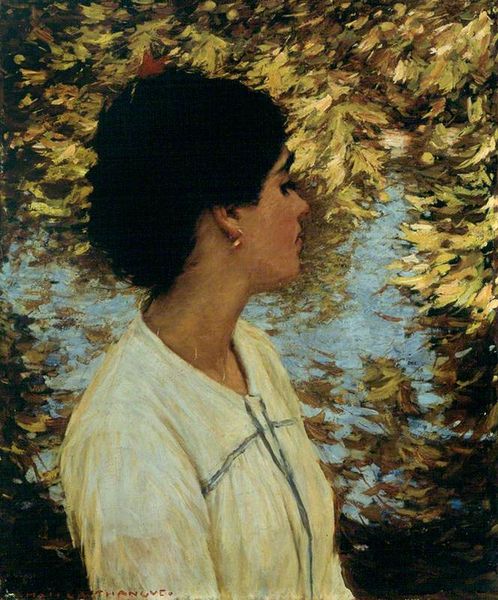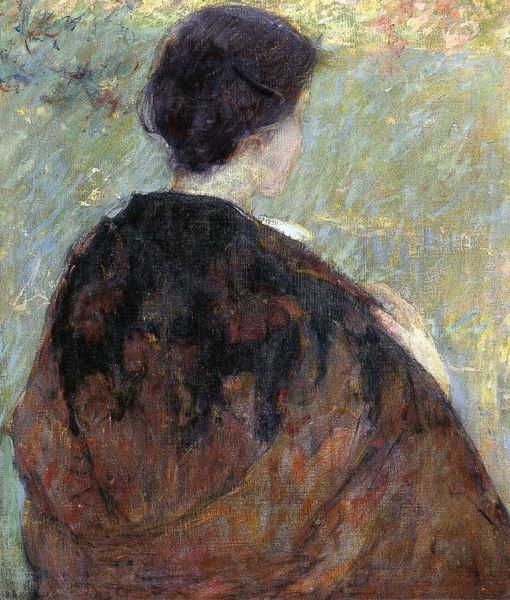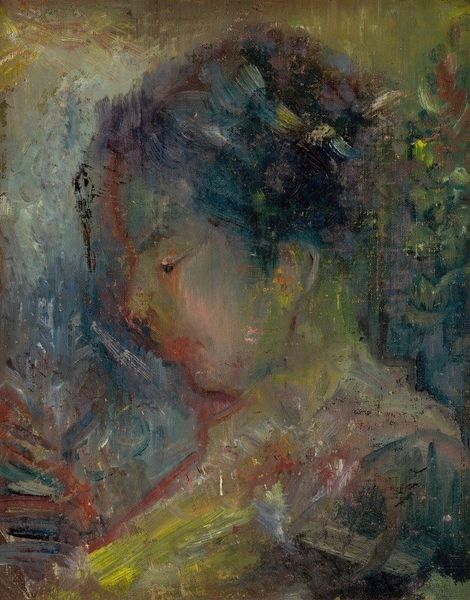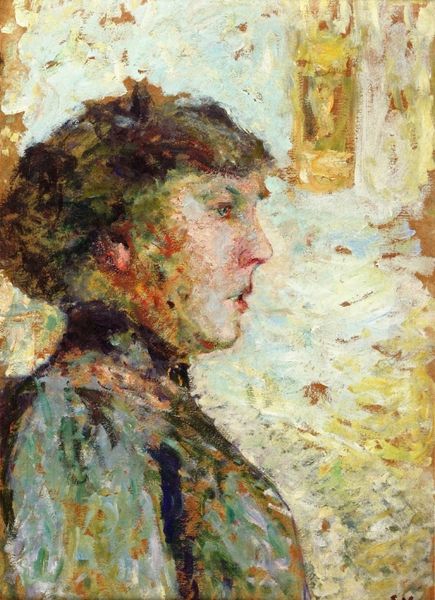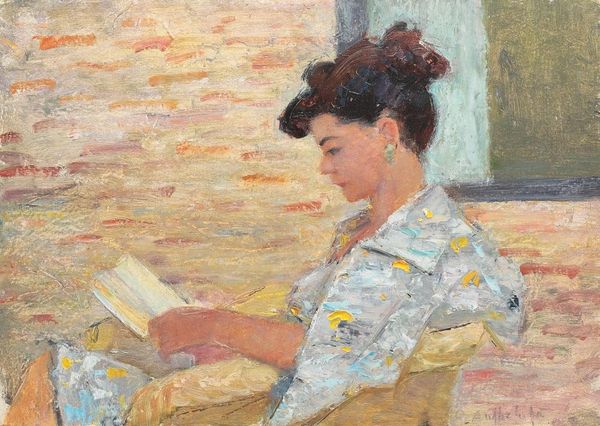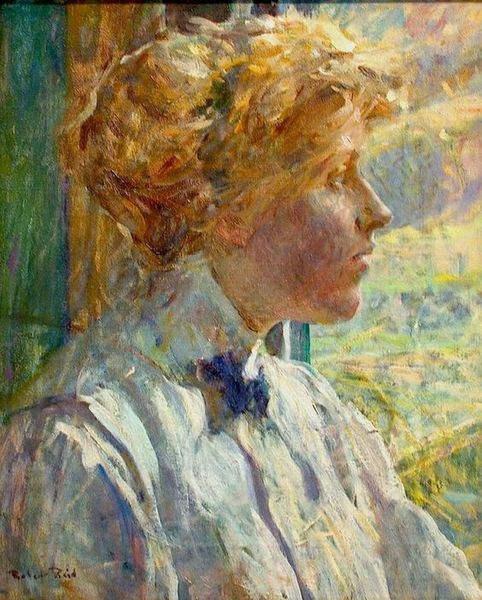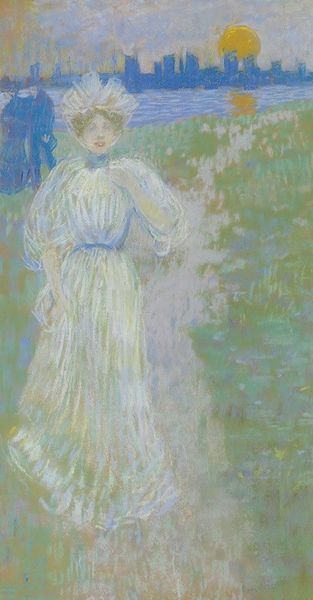
Curator: "Esther Bensusan, the Artist's Wife," painted by Lucien Pissarro in 1893. Oil on canvas, of course. What's your first take? Editor: It feels…contained. All those shades of green, it’s like she's nestled inside the canvas itself. Peaceful, but maybe a little trapped? Curator: I can see that. The dominance of green—the backdrop practically merges with her dress—creates a very specific, almost symbolic environment. Green, historically, signals fertility, growth, but also envy or confinement, depending on context. Editor: Right, green with envy—a deeply loaded color. And the wallpaper! Those twisting vegetal forms feel a little oppressive, almost consuming her. What did domesticity mean for a woman at that time? Was it freedom, or a gilded cage? Curator: I suspect a bit of both, knowing their relationship. Pissarro deeply valued Esther’s intellect and support. He departs from his father’s more solid Impressionism here, edging toward a Pointillist fragmentation, each dot of color contributing to the overall sense of…well, I keep coming back to harmony. A kind of striving for balance. Editor: The face isn't pointillist, though, is it? He seems to reserve that almost frantic, broken touch for everything surrounding her. Her face has a certain clarity, almost classical, rendered in softer strokes. Curator: Indeed. A contrast perhaps highlighting Esther’s inner strength. Or, at least, how Lucien *saw* her. The very controlled, classic profile view gives the figure a certain dignity against this tempestuous Pointillist storm. Editor: It almost feels like he’s defining her, holding her still against the anxieties or changes implied in that wild pattern behind. Maybe she grounded him somehow? Curator: Beautifully put. And maybe that’s what portraiture does best—not just capturing a likeness, but revealing the intricate dance between the subject and the artist. A negotiation of perception and emotion, coded in color and brushstrokes. Editor: So much of our experience is mirrored in images that become part of our personal and cultural history; "Esther Bensusan" lets us see both a face, and perhaps a deeper context than what is at first revealed. Curator: Well said. Next?
Comments
No comments
Be the first to comment and join the conversation on the ultimate creative platform.
